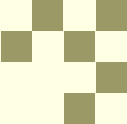| Main page | Site map | German version |
 |
| Modern > Ernest Rutherford |
Ernest Rutherford was son of James Rutherford, a farmer who had emigrated from Perth, Scotland, and his wife Martha (née Thompson), originally of Hornchurch, Essex, England.His parents had moved to New Zealand "to raise a little flax and a lot of children". Ernest was born at Spring Grove (now Brightwater), near Nelson, New Zealand. His name was mistakenly spelt Earnest Rutherford when his birth was registered. He studied at Havelock School and then Nelson College and won a scholarship to study at Canterbury College, University of New Zealand where he was president of the debating society among other things. In 1895, after gaining his BA, MA and BSc, and doing two years of research at the forefront of electrical technology, Rutherford travelled to England for postgraduate study at the Cavendish Laboratory, University of Cambridge (1895–1898), and he briefly held the world record for the distance over which electromagnetic waves could be detected. During the investigation of radioactivity he coined the terms alpha and beta to describe the two distinct types of radiation emitted by thorium and uranium.
In 1898 Rutherford was appointed to the chair of physics at McGill University in Montreal, Canada, where he did the work which gained him the Nobel Prize in Chemistry 1908. From 1900 till 1903 he was joined by the young Frederick Soddy (Nobel Prize in Chemistry 1921) where they collaborated on research into the transmutation of elements. Ernest Rutherford had demonstrated that radioactivity was the spontaneous disintegration of atoms. He noticed that a sample of radioactive material invariably took the same amount of time for half the sample to decay — its "half-life" — and created a practical application for this phenomenon using this constant rate of decay as a clock, which could then be used to help determine the actual age of the Earth that turned out to be much older than most of the scientists at the time believed.
In 1900 he married Mary Georgina Newton (1876-1945); they had one daughter Eileen Mary (1901-1930), who married Ralph Fowler.
In 1907 Rutherford took the chair of physics at the University of Manchester. There he did the experiments along with Hans Geiger and Ernest Marsden (Geiger-Marsden experiment) that discovered the nuclear nature of atoms. It was his interpretation of this experiment that led him to the Rutherford model of the atom having a very small positively charged nucleus orbited by electrons. He became the first person in 1919 to transmute one element into another when he converted nitrogen into oxygen through the nuclear reaction 14N(α,p)17O. In 1921, while working with Niels Bohr (who postulated that electrons moved in specific orbits), Rutherford theorized about the existence of neutrons, which could somehow compensate for the repelling effect of the positive charges of protons by causing an attractive nuclear force and thus keeping the nuclei from breaking apart. Rutherford's theory of neutrons was later proved in 1932 by his associate James Chadwick who was awarded the Nobel Prize in Physics for his discovery in 1935.
He was knighted in 1914. In 1919 he returned to the Cavendish as Director. Under him, Nobel Prizes were awarded to Chadwick for discovering the neutron (in 1932), Cockcroft and Walton for splitting the atom using a particle accelerator and Appleton for demonstrating the existence of the ionosphere. He was admitted to the Order of Merit in 1925 and in 1931 was created Baron Rutherford of Nelson, of Cambridge in the County of Cambridge, a title which became extinct upon his unexpected death in hospital following an operation for an umbilical hernia(1937). Since he was a Lord, British protocol required that he be operated on by a titled doctor, and the delay cost him his life. He is interred in Westminster Abbey alongside J. J. Thomson.
| Ewa Izdebska site Poczet fizyków |

